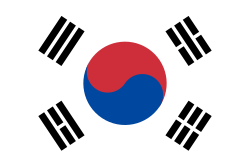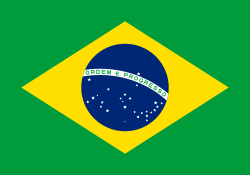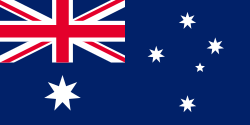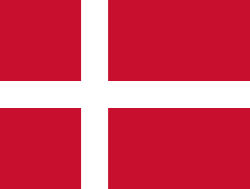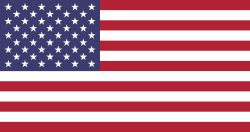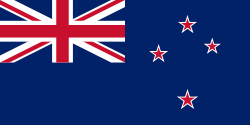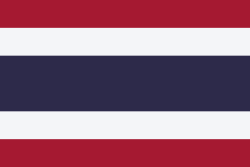Peace Queen Cup
Der Peace Queen Cup war ein dreimal von 2006 bis 2010 in Südkorea ausgetragener Fußballwettbewerb für Frauen-Nationalmannschaften. Eingeführt wurde er 2006 von den Initiatoren des Peace Cup, der Ausgabe dieses Wettbewerbs für Männer, nachdem dieser von der Öffentlichkeit positiv aufgenommen wurde. Im Gegensatz zu den Frauen treten bei den Männern keine National-, sondern Vereinsmannschaften an. Der Wettbewerb dient zur Völkerverständigung. Die überschüssigen Einnahmen kamen hungernden Kindern aus Asien und Afrika zugute.
Spielmodus
Der Spielmodus ist derselbe wie bei der Männer-Ausgabe des Turniers. Gespielt wird in zwei Gruppen mit je vier Mannschaften. Die Mannschaften spielen je einmal gegen ihre Gruppengegner. Die beiden Gruppensieger spielen in einem einzigen Final-Spiel den Turniersieger untereinander aus.
Siegprämie
Die Siegprämien fallen im Gegensatz zu denen der Männer verhältnismäßig niedrig aus. Dies ist in dem kleineren Medieninteresse begründet. Für die gewinnende Nationalelf gibt es 200.000 US-Dollar, für den unterlegenen Finalisten 50.000 US-Dollar.
Turnier 2006
Die erste Ausgabe des Peace Queen Cup fand vom 28. Oktober bis zum 4. November in Südkorea statt.[1]
Ursprünglich sollten acht Nationen aus fünf Kontinenten am ersten Turnier teilnehmen. Vorgesehen war die Teilnahme von Nordkorea, Südkorea, Dänemark, Italien, Brasilien, Australien, Nigeria und den USA, doch am 11. Oktober 2006, also weniger als einen Monat vor Beginn des Turnieres, zog Nordkorea seine Zusage aufgrund der feindlichen Haltung einiger der anderen Nationen zum eigenen Atomprogramm zurück. Auch Nigeria trat nicht an, sodass Nordkorea durch die Niederlande und Nigeria durch Kanada ersetzt wurde.
Teilnehmer
Gruppe A | Gruppe B |
Spielorte
Seoul / Suwon / Changwon / Cheonan / Gimhae / Masan
Turnierverlauf
Gruppe A
| Pl. | Land | Sp. | S | U | N | Tore | Diff. | Punkte |
|---|---|---|---|---|---|---|---|---|
| 1. | 3 | 3 | 0 | 0 | 10:5 | +5 | 9 | |
| 2. | 3 | 1 | 1 | 1 | 5:5 | ±0 | 4 | |
| 3. | 3 | 1 | 1 | 1 | 4:5 | −1 | 4 | |
| 4. | 3 | 0 | 0 | 3 | 2:6 | −4 | 0 |
Gruppe B
| Pl. | Land | Sp. | S | U | N | Tore | Diff. | Punkte |
|---|---|---|---|---|---|---|---|---|
| 1. | 3 | 2 | 1 | 0 | 5:1 | +4 | 7 | |
| 2. | 3 | 2 | 1 | 0 | 4:2 | +2 | 7 | |
| 3. | 3 | 1 | 0 | 2 | 2:4 | −2 | 3 | |
| 4. | 3 | 0 | 0 | 3 | 0:4 | −4 | 0 |
Finale
| Kanada[2] | USA | |||||
|---|---|---|---|---|---|---|
 |
|  | ||||
| Erin McLeod – Melanie Booth, Candace Chapman (84. Jodi-Ann Robinson), Martina Franko, Randee Hermus, Isabelle Morneau, Diana Matheson, Andrea Neil, Amy Walsh, Rhian Wilkinson Christine Sinclair Cheftrainer: Even Pellerud | Hope Solo – Kate Sobrero (64. Heather Mitts), Christie Rampone, Cat Whitehill – Angela Hucles (64. Aly Wagner) – Kristine Lilly, Leslie Osborne, Lori Chalupny, Carli Lloyd (88. Marci Jobson), Natasha Kai (83. Tina Ellertson) – Lindsay Tarpley (71. Kacey White) Cheftrainer: Greg Ryan | |||||
Turnier 2008
Die zweite Ausgabe des Peace Queen Cup fand vom 14. bis zum 21. Juni in Südkorea statt.[3]
Teilnehmer
Gruppe A | Gruppe B |
Turnierverlauf
Gruppe A
| Pl. | Land | Sp. | S | U | N | Tore | Diff. | Punkte |
|---|---|---|---|---|---|---|---|---|
| 1. | 3 | 3 | 0 | 0 | 10:1 | +9 | 9 | |
| 2. | 3 | 2 | 0 | 1 | 5:4 | +1 | 6 | |
| 3. | 3 | 1 | 0 | 2 | 2:4 | −2 | 3 | |
| 4. | 3 | 0 | 0 | 3 | 0:8 | −8 | 0 |
Gruppe B
| Pl. | Land | Sp. | S | U | N | Tore | Diff. | Punkte |
|---|---|---|---|---|---|---|---|---|
| 1. | 3 | 3 | 0 | 0 | 5:1 | +4 | 9 | |
| 2. | 3 | 2 | 0 | 1 | 5:2 | +3 | 6 | |
| 3. | 3 | 1 | 0 | 2 | 2:3 | −1 | 3 | |
| 4. | 3 | 0 | 0 | 3 | 1:7 | −6 | 0 |
Finale
| USA[4] | Kanada | ||||
|---|---|---|---|---|---|
 |
|  | |||
| Hope Solo – Heather Mitts, Christie Rampone Cheftrainerin: Pia Sundhage | Erin McLeod – Candace Chapman, Randee Hermus, Emily Zurrer, Amber Allen (30. Brittany Timko) – Diana Matheson, Clare Rustad, Rhian Wilkinson – Kara Lang, Christine Sinclair, Melissa Tancredi Cheftrainer: Even Pellerud | ||||
Turnier 2010
Die dritte Ausgabe des Peace Queen Cup fand vom 17. bis zum 23. Oktober in Südkorea statt.[5]
Im Unterschied zu den beiden vorangegangenen Turnieren, nahmen am Turnier 2010 sechs Mannschaften teil, darunter mit England die einzige Mannschaft aus Europa. Alle Spiele in Gruppe A endeten torlos, so dass Südkorea als Gruppensieger in das Finale gegen Australien, Sieger der Gruppe B, gelost wurde.
Teilnehmer
Gruppe A | Gruppe B |
Turnierverlauf
Gruppe A
| Pl. | Land | Sp. | S | U | N | Tore | Diff. | Punkte |
|---|---|---|---|---|---|---|---|---|
| 1. | 2 | 0 | 2 | 0 | 0:0 | ±0 | 2 | |
| 2. | 2 | 0 | 2 | 0 | 0:0 | ±0 | 2 | |
| 3. | 2 | 0 | 2 | 0 | 0:0 | ±0 | 2 |
Gruppe B
| Pl. | Land | Sp. | S | U | N | Tore | Diff. | Punkte |
|---|---|---|---|---|---|---|---|---|
| 1. | 2 | 2 | 0 | 0 | 4:1 | +3 | 6 | |
| 2. | 2 | 1 | 0 | 1 | 2:3 | −1 | 3 | |
| 3. | 2 | 0 | 0 | 2 | 0:2 | −2 | 0 |
Finale
| Südkorea[6] | Australien[6] | |||||
|---|---|---|---|---|---|---|
 |
|  | ||||
| Jeon Min-kyung – Hong Kyung-suk, Ryu Ji-eun, Lee Eun-mi, Kim Do-yeon – Kim Na-rae (45. Ji So-yun), Park Eun-jung, Kwon Hah-nul (89. Shim Seo-yeon), Cha Yun-hee (45. Kim So-yeon), Jeon Ga-eul – Park Hee-young (85. Lee Jang-jang) Cheftrainer: Choi In-chul | Melissa Barbieri – Lauren Colthorpe (71. Aivi Luik), Kim Carroll, Elise Kellond-Knight, Clare Polkinghorne (84. Teigen Allen) – Collete McCallum, Caitlin Munoz, Sally Shipard, Servet Uzunlar – Kathryn Gill, Kyah Simon Cheftrainer: Tom Sermanni | |||||
Weblinks
- Finale 2006 auf weltfussball
- Finale 2008 auf weltfussball
- Finale 2010 auf kfa.or.kr
Einzelnachweise
- ↑ Spielplan 2006 auf rsssf.org
- ↑ Mannschaft Kanada auf canadasoccer.com
- ↑ Spielplan 2008 auf rsssf.org
- ↑ Mannschaft USA auf ussoccer.com
- ↑ Spielplan 2010 auf peacecup.com/ko
- ↑ a b Mannschaften auf kfa.or.kr
Auf dieser Seite verwendete Medien
Flag of Canada introduced in 1965, using Pantone colors. This design replaced the Canadian Red Ensign design.
Flag of Australia, when congruence with this colour chart is required (i.e. when a "less bright" version is needed).
See Flag of Australia.svg for main file information.Autor/Urheber: Diese Vektorgrafik wurde von ed g2s (Diskussion) mit Inkscape erstellt und dann manuell nachbearbeitet, Lizenz: CC BY-SA 3.0
Yellow card (association football).
Chinese Taipei Olympic Flag. According to the official website of Chinese Taipei Olympic Committee, Blue Sky(circle) & White Sun(triangles) above the Olympic rings is neither the National Emblem of the Republic of China, nor the Party Emblem of Kuomintang (KMT), but a design in between, where the triangles do not extend to the edge of the blue circle, as registered at International Olympic Committee in 1981 and digitally rendered in 2013. Besides, the blue outline of the five-petaled plum blossom is broader than the red one. Moreover, the CMYK code of the blue one and the Blue Sky & White Sun is "C100-M100-Y0-K0", and different from the Olympic rings (C100-M25-Y0-K0). Note that it's the only version recognized by IOC.
Chinese Taipei Olympic Flag. According to the official website of Chinese Taipei Olympic Committee, Blue Sky(circle) & White Sun(triangles) above the Olympic rings is neither the National Emblem of the Republic of China, nor the Party Emblem of Kuomintang (KMT), but a design in between, where the triangles do not extend to the edge of the blue circle, as registered at International Olympic Committee in 1981 and digitally rendered in 2013. Besides, the blue outline of the five-petaled plum blossom is broader than the red one. Moreover, the CMYK code of the blue one and the Blue Sky & White Sun is "C100-M100-Y0-K0", and different from the Olympic rings (C100-M25-Y0-K0). Note that it's the only version recognized by IOC.
